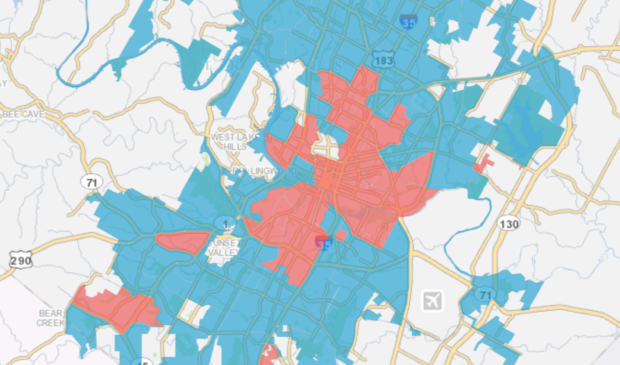ZAP contemplates uprooting
Thursday, February 7, 2019 by
Alyx Wilson Last month, on Jan. 15, the Zoning and Platting Commission heard a long-awaited briefing from the University of Texas’ Uprooted study on gentrification and displacement in Austin.
Dr. Jake Wegmann, one of the three authors, presented a summarized version of the study, which was completed in September 2018. The project evaluated three main factors: where gentrification is happening in Austin; strategies and policies for preventing displacement; and finally, the start of a framework for evaluating and selecting particular anti-displacement policies.
“I would ask you not to say that some people think gentrification is bad and some people think gentrification is good,” said Commissioner Betsy Greenberg, commenting on the verbiage Wegmann used to open the presentation. “You might think, oh, it looks nice now because it’s got new buildings, but those new restaurants, they make people who live there uncomfortable if they can’t even afford to shop in the new stores or go to those new restaurants.”
Wegmann explained that the word gentrification on its own can be polarizing, while involuntary displacement is understood by most people to be a negative thing. He said he believes it is more productive to focus on displacement rather than gentrification when talking about policy decisions.
The study found that five subgroups are most vulnerable to displacement: communities of color; renters; households with children in poverty; people making at or below 80 percent of the median family income; and people 25 and older without a bachelor’s degree.
Wegmann noted that one strategy for preventing displacement is to increase legal protection for renters. He emphasized mandatory city tenant protection for all rental properties receiving city support.
In order to begin creating a policy framework that would fit Austin’s needs, the researchers looked at how several neighborhoods across the country dealt with gentrification and displacement – for one, Columbia Heights in Washington, D.C.
Columbia Heights saw a massive demographic shift between 1990 and 2010 after a subway station was built in the heart of the neighborhood. Because of policy actions taken by the city, the African-American population stopped decreasing in 2010 and has been on the rise ever since.
The Tenants Opportunity to Purchase Act, or TOPA, is a law in the district which requires that tenants are given the first opportunity to buy a unit their landlord is selling. Additionally, 22 percent of the housing stock in Columbia Heights has been restricted to renters, which keeps the renting population steady.
Commissioner David King asked Wegmann’s opinions on which policies he believed have been the most – or least – effective in Austin.
“It’s impossible to say one policy was the reason why a neighborhood changed,” Wegmann said. He suggested the city start with a database, and focus on reporting how many affordable housing units were created by the city’s various density bonus programs and other basic facts.
Wegmann also said that D.C. invests $100 million in its housing production trust fund each year, and so far those investments have created almost 10,000 affordable units in the district.
“Now that the bond has passed, we’ve got something to be excited about here in Austin,” Wegmann said, referring to the $925 million bond voters approved in November.
Many of the possible solutions and policies outlined in the study were rooted in proactivity of city government.
“If we’re doing things like investing in cap and corridor improvements, we should be baking in anti-displacement strategy from the beginning. We should be anticipating certain investments will push up land values and create pressures,” Wegmann said.
The commission discussed how Texas state laws tend to bar usual anti-displacement policies from being put into action. The Uprooted project outlined several viable options that could begin to help address Austin’s most critical gentrification and involuntary displacement issues.
The Uprooted study has created interactive maps depicting the neighborhoods and areas at risk of gentrification and displacement in Austin.
Map still from the Uprooted Study, via the University of Texas.
The Austin Monitor’s work is made possible by donations from the community. Though our reporting covers donors from time to time, we are careful to keep business and editorial efforts separate while maintaining transparency. A complete list of donors is available here, and our code of ethics is explained here.
You're a community leader
And we’re honored you look to us for serious, in-depth news. You know a strong community needs local and dedicated watchdog reporting. We’re here for you and that won’t change. Now will you take the powerful next step and support our nonprofit news organization?






